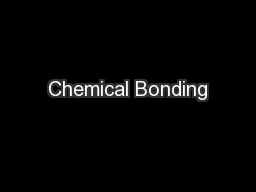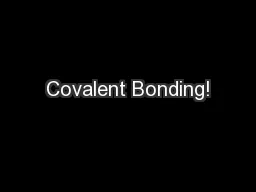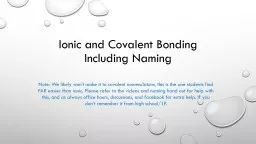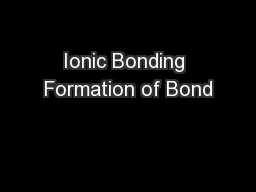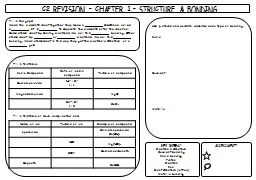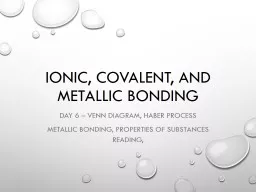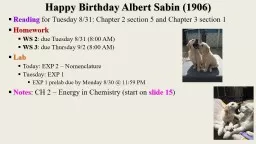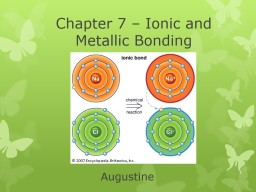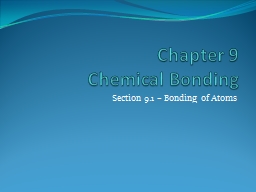PPT-Ionic Bonding Chapter 6 Quick Review
Author : southan | Published Date : 2020-11-06
Atomic number Total number of electrons The group number tells you the amount of valence electrons an element has The metals are on the left side of the periodic
Presentation Embed Code
Download Presentation
Download Presentation The PPT/PDF document "Ionic Bonding Chapter 6 Quick Review" is the property of its rightful owner. Permission is granted to download and print the materials on this website for personal, non-commercial use only, and to display it on your personal computer provided you do not modify the materials and that you retain all copyright notices contained in the materials. By downloading content from our website, you accept the terms of this agreement.
Ionic Bonding Chapter 6 Quick Review: Transcript
Download Rules Of Document
"Ionic Bonding Chapter 6 Quick Review"The content belongs to its owner. You may download and print it for personal use, without modification, and keep all copyright notices. By downloading, you agree to these terms.
Related Documents



